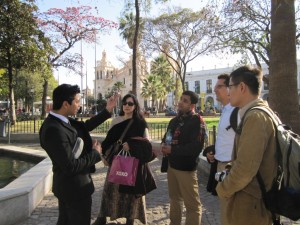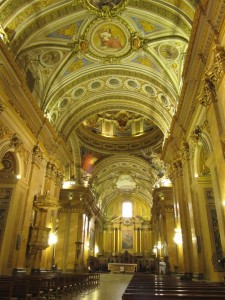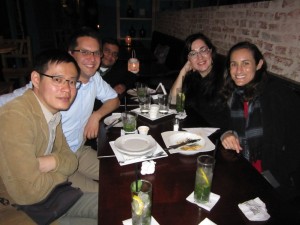The days in Cordoba are passing so quickly, I cannot believe the CSC assignment is almost half-way through. One of our ADEC co-workers asked yesterday what we missed most about home. I responded that I’ve been too busy to have the time to miss much at all. (Ryan, of course I miss you). There is not nearly enough time to do all that I would like, in terms of both work and personal experiences. I’m trying to make the most of every minute.
We just finished up our second weekly full IBM CSC team meeting, and I have a little alone time to decompress and catch up on my blog. Work with ADEC is going well and is very busy. We have a lot of discussions and meetings with the ADEC team, which frequently lead to more discussions and meetings, not leaving much time to do ‘real’ work. Now that I am writing this, I realize that sounds an awful lot like my job back home.
The ADEC team is continuing to plan activities around Cordoba for us, and join us whenever possible. Yesterday, Isabel and Paula joined Henk, Jayan, Roman, and me for a tour around part of the city and happy hour. Here are Paula, Jayan, Roman, and Henk with the tour guide in Plaza San Martin, with Iglesia Catedral in the background. The Plaza has been the center of life in Cordoba since it was constructed in the late 1500s. Back then, it was used as a marketplace for selling and trading goods, the place for celebrations, bullfights, and the location of executions. Today it is still bustling with people enjoying the green space and is the host to many events, including speeches, protests, and music and dancing. The statue in the middle of the plaza is of, you guessed it, Jose de San Martin, considered a liberator of Argentina and South America from the Spanish Empire. Someone on the IBM team realized early on that San Martin points in the direction of our hotel, so we can always follow that if we get lost.


From the plaza, we were led into Iglesia Catedral. The inside of the cathedral is pretty amazing; this picture definitely does not do it justice. Among other things, the cathedral contains a statue of St. Mark with a lion, created by a local Argentine artist. However, since lions are not native to Argentina, the artist created what was described to him by the Europeans, and it looks more like a monkey than a lion. We then moved on to a statue of Jeronimo Luis de Cabrera, a Spanish Conquistador and founder of the city of Cordoba. It was interesting to learn that Cabrera had good relations and lived peacefully with the native inhabitants of Cordoba. The tour guide also told us that Cabrera was the child of an affair his father had with a Jewish woman, but Google has yet to verify that for me.


The tour finished in the Manzana Jesuitica (the Jesuit block, not the Jesuit apple), declared a World Heritage Site by UNESCO in 2000. We toured the Iglesia de La Compania de Jesus church and the neighboring National University of Cordoba building, now a museum. Bishop Fray Fernando de Trejo y Sanabria founded the seminary, which later became an official university in the early 1600’s. The university is the oldest and second largest university in Argentina. The Jesuits were expelled from South America in the mid-1700’s, returning about 100 years later and regaining ownership of some of their land and churches. After the tour, we followed Paula to a happy hour spot near her apartment for some appetizers and pretty good mojitos. Is it wrong to put a picture of a Jesuit Bishop next to a picture of happy hour?


#ibmcsc argentina
